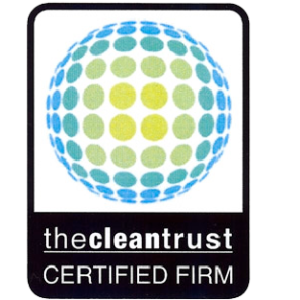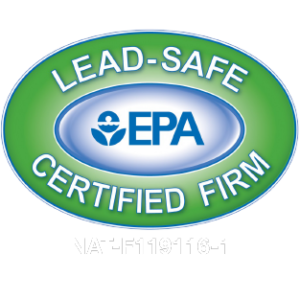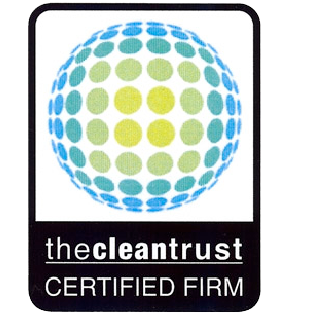Asbestos, Biohazard & Trauma Remediation
Following crime or trauma, you can trust Revive Restoration, Inc. to make things right.
We understand that emotions can run high in these situations, and you need to get back into your home or business as soon as possible. No matter the cleanup called for after a crime or traumatic accident, our expert team of remediators has it covered.
Revive Restoration is proud to lead the way in providing on-time, affordable blood and trauma cleanup solutions throughout the Midwest. We’ll handle all of the bodily fluids, tissues, and other damage — and we’ll make things right again so you don’t have to worry.
Our crews follow strict standards for cleaning and disinfecting biohazards to prevent the spread of disease. Every team member is highly trained to handle each accident with the thoroughness and sensitivity it deserves.
Asbestos can be tricky to catch — but it’s dangerous to miss.
Our seasoned experts know exactly how to find and remove this carcinogen before it has the chance to affect your health. We’ll take you through the testing and removal process as quickly and efficiently as possible so you can get back to your regular life, worry-free.
We also remove vermiculite particles from your home or business.
Vermiculite particles were a popular insulation choice throughout most of the 1900s, but a small amount of commercially sold vermiculite was contaminated with asbestos fibers. We don’t see vermiculite much anymore — if your home has this type of insulation, we recommend that you replace it with something more up to date.
At Revive Restoration, we’re trained to carefully remove vermiculite from Midwest homes by using a special vacuum and cleaning up any debris. Our experienced team will then replace the particles with modern insulation that is proven to insulate homes more effectively.
Frequently Asked Questions About Asbestos and Biohazards
What is asbestos?
Asbestos is a natural mineral that was once used widely in materials like cement, plastic, and fabric because of its flexibility and resistance to corrosion.
The mineral fibers are extremely toxic to humans when inhaled or ingested — once inside the body, they don’t pass through or dissipate, thus causing severe scarring and an increased risk of aggressive cancers like mesothelioma over time.
What are the signs of asbestos poisoning?
Over time, breathing in asbestos fibers can scar your lungs. The beginning signs usually include:
- Coughing
- Shortness of breath
- Fatigue and difficulty focusing
- Chest or shoulder pain
If you experience any of these symptoms and believe you’ve been exposed to asbestos, contact your doctor right away. Those most at risk for asbestos exposure are individuals in the construction and electrical industry who have been involved with the demolition of old buildings containing the mineral.
Is asbestos okay if left undisturbed?
If asbestos is left completely undisturbed, it doesn’t present a health risk since the mineral fibers won’t be inhaled. If the material containing the asbestos (typically concrete, insulation, or flooring) is damaged, however, it will immediately become dangerous and need to be removed, ideally by a professional, certified asbestos abatement company.
Can a one-time exposure to asbestos be dangerous?
While no amount of asbestos exposure is considered safe, thankfully the health risks of a short-term event are pretty low on average. Things like a one-time exposure during a home renovation are unlikely to cause future diseases like mesothelioma or other cancers.
With that said, it’s important to note that asbestos exposure is cumulative, so short occurrences can add up to cause harm over time. Even if the exposures happen years apart, each one increases your risk of developing severe health problems, so it’s best to stay away from asbestos entirely.
Extreme events can also cause heightened exposure over a short period of time — for example, contact during the 9/11 attacks led to an especially high rate of disease despite the short window of exposure. Pay extra attention to asbestos during natural disasters or large construction projects.
Can a homeowner remove asbestos on his or her own?
Legally, yes, a homeowner can attempt to remove asbestos from his or her own property. There used to be an array of federal regulations that prevented these do-it-yourself projects, but as of 2018 all of them have been lifted.
Although there is no legal trouble associated with removing asbestos on your own, it is still dangerous, and we strongly recommend against it. The Environmental Protection Agency advises homeowners to use an accredited abatement professional to avoid the risk of future problems and long-term health complications.
Are bloodstains dangerous? Do they carry disease?
Any dangerous biological substance is considered a biohazard — including blood. Bloodstains can carry HIV, Hepatitis B, and Hepatitis C, not to mention other less common but still potentially dangerous pathogens.
Dried blood is significantly safer than a fresh stain, but no one can guarantee that all harmful bacteria have died when the stain dries.
It’s always best to wear personal protective gear when cleaning up any type of bodily fluid or to call a professional to take care of it for you.
How long does it take to clean up after a crime or trauma scene?
The time it takes to clean up after a crime scene, suicide, or other trauma depends on the severity of the biohazard. A mild scene might require a couple of hours to clean, while a more serious situation might take a few days.
Revive Restoration has the best response time in the Madison, WI area for restoring all types of home and business damage. No matter how big or small your trauma cleanup is, we’ll get on site quickly and work relentlessly until we’ve made everything right again.
How are crime scenes and blood cleaned?
Each crime scene is unique. Throughout the entire trauma cleanup process, professional crews wear personal protective equipment including shoe covers, liquid impermeable coveralls, gloves, and eyewear to keep them safe from the biohazard of bodily fluids and tissues. With specifically rated cleaning agents, they make sure that infectious pathogens are completely eradicated.
Can my belongings be restored if they’re stained with blood or bodily fluids?
Biohazards like blood and other bodily fluids can carry dangerous pathogens like HIV, Hepatitis B, Hepatitis C, and others. Expert remediation teams are trained to minimize health risk and ensure safety.
Professional crime and trauma cleaning crews do their best to restore every scene to its former state, but they can’t guarantee that every item will be able to be saved. Some porous materials, including carpet and soft furniture, may need to be completely replaced due to safety concerns.
Can I clean up after a crime or trauma scene by myself?
Due to the potentially hazardous nature of biological materials like blood, tissue, and other body fluids that are left behind after a crime or trauma accident, it is recommended that you do not try to clean up the scene by yourself.
Instead, you should enlist a trained professional who can guarantee safe, complete removal of all dangerous material.

Non-Emergency
Fill out our form and we will reply
within four business hours.
Emergency
Call 608.222.9222 to address your issue right away. If our phone lines are experiencing high volume, our form is a great way to get ahold of us. We monitor it 24/7 and will get back to you ASAP!
"*" indicates required fields



















